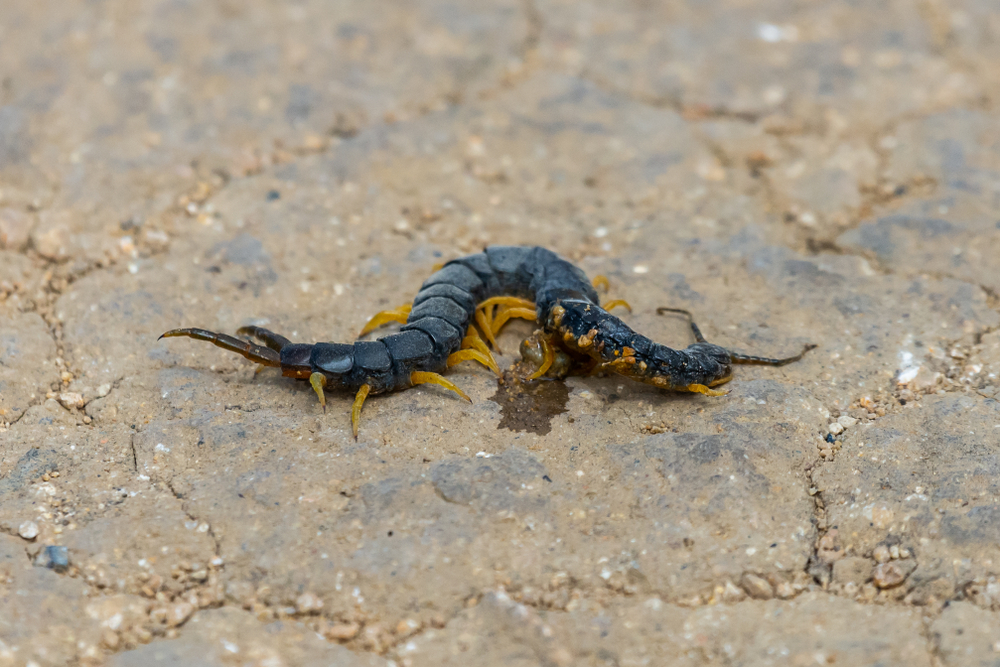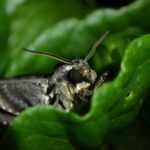Desert Centipede Facts: Scolopendra Polymorpha Guides
Get key facts about the desert centipede (Scolopendra polymorpha). Explore its habitat, behavior, and safety tips in clear, simple language.
Ultimate Guide to Identifying and Understanding the Desert Centipede
Wondering what a desert centipede is and if it poses any danger? These colorful and venomous animals inhabit arid regions, such as Texas and Arizona. This comprehensive guide covers identification, habitat, venom effects, and prevention tips for desert centipedes and related species.
- Desert centipedes, capable of reaching lengths up to 9 inches, play a crucial ecological role by controlling arthropod populations in their desert habitat.
- The venom of desert centipedes, particularly Scolopendra polymorpha, contains potent neurotoxins and cytotoxins. This venom can cause severe damage to prey, and certain peptides exhibit antimicrobial activity against harmful bacteria.
- Effective prevention strategies for homeowners include moisture control, debris removal, and sealing entry points. These measures deter desert centipedes from invading living spaces. Effective pest prevention methods are also relevant for managing other desert pests such as scorpions. Scorpion pest control methods, such as avoiding powders, are also relevant for effective and safe pest prevention.
Overview of Desert Centipedes
Desert centipedes can reach impressive lengths of up to 9 inches. Size varies depending on the species. Their appearance is equally captivating, often featuring a palette of red on their heads and black or green body segments. These centipedes have ocelli, simple eyes that help them navigate. Their segmented body is flattened for agility and movement.
With 20 pairs of yellow legs, desert centipedes are agile hunters. They move swiftly to catch their prey. Their unique physical traits and vivid colors make them stand out in the desert habitat. They play a crucial role by controlling populations of other arthropods and small animals.
Common Desert Centipede (Scolopendra polymorpha)
The common desert centipede, also known as the tiger centipede or banded desert centipede, ranges in body length from 4 to 7 inches. It is also called the multicolored centipede or tiger-striped centipede due to its varying coloration and one dark lateral stripe on its body segments. The species name polymorpha, meaning ‘many forms,’ reflects this diversity. Some populations even show striking blue coloration with indigo stripes, showcasing diversity within this species.
Common desert centipedes are found in regions like:
- Texas
- New Mexico
- Arizona
- Parts of northern Mexico along the Pacific coast
They often inhabit dry grasslands, forests, and deserts. Adapted to survive in arid conditions, these centipedes seek shelter in moist and cool places like desert rocks during the day. They are primarily nocturnal, becoming more active during cooler winter months. They tend to remain burrowed underground or under debris to retain moisture.
Their resilience to drought and ability to thrive with limited moisture make them one of the most drought-resistant centipede species.
Giant Desert Centipede (Scolopendra heros)
The giant desert centipede, also known as the giant Sonoran centipede, is a remarkable creature. It often measures between 6.5 and 9 inches in length. Its vibrant coloration includes a red head, the first two body segments in red, and black body segments with traces of green. This makes it a visually striking predator. Equipped with 20 pairs of yellow legs and four ocelli, these centipedes are well-adapted to their environments.
They inhabit rocky woodlands and areas like the Tonto Forest. Giant desert centipedes use their pincers to inject venom into prey and subdue them efficiently. Their typical lifespan ranges from one to six years. During this time, they play a significant role in their ecosystem by controlling populations of smaller arthropods and insects.
Texas Redheaded Centipede
The Texas redheaded centipede, a subspecies of Scolopendra heros, is known for its vibrant reddish coloration. This makes it easily identifiable compared to other centipedes. This distinctive appearance not only sets it apart visually but also warns potential predators of its venomous capabilities. It is also known as the giant redheaded centipede.
Primarily found in the southern and central regions of Texas, the Texas redheaded centipede thrives in diverse habitats such as forests and grasslands. It adapts well to different environments within these regions. This allows it to be a prevalent species, helping control local pest populations.
Sonoran Desert Centipede
The Sonoran Desert centipede and the Arizona desert centipede primarily inhabit regions of the Sonoran Desert. This desert spans parts of California, Arizona, and Mexico. Typical habitats include rocky crevices, areas under logs, and desert foliage where moisture is available. These conditions provide the centipedes with what they need to thrive. Their flattened bodies allow them to navigate tight spaces. This offers protection from predators.
Adapted to tolerate extreme temperatures and conserve moisture, Sonoran Desert centipedes are nocturnal. They stay hidden during the day to avoid intense heat. As predators, they use their speed and venom to hunt smaller arthropods. They play a crucial role in their desert habitat.
Venom and Its Effects
The venom of Scolopendra polymorpha is a complex cocktail of proteins. At least 61 distinct families have been identified. This contributes to its potent effects on prey and potential complications in humans. The venom contains a mix of neurotoxins and cytotoxins. These can cause severe pain and tissue damage in humans, including muscle damage characterized by necrosis, ragged red fibers, and accumulation of diseased mitochondria.
Interestingly, the venom also exhibits peptide exhibited antimicrobial activity. It is effective against pathogens such as Staphylococcus aureus, Pseudomonas aeruginosa, and Escherichia coli. These bacteria can cause urinary tract infections and other tropical diseases. This antimicrobial property suggests potential medical applications. However, the primary role of the venom is to subdue prey and deter predators.
Venom Regeneration
Desert centipedes have the remarkable ability to regenerate their venom. This process is influenced by environmental conditions and their metabolic state. Factors such as fasting or reduced feeding can impact the rate at which venom glands regenerate. This ensures that these centipedes generally remain effective hunters even after using their venom.
Prey Effects Observed
The venom of Scolopendra polymorpha causes significant muscle damage in prey. This damage is characterized by necrosis and disruption of muscle fibers. The venom disrupts cellular respiration, leading to detrimental physiological effects that incapacitate the prey. Research shows the venom can induce paralysis and disrupt cellular function in various prey species. This makes it a highly effective hunting tool.
At the cellular level, the venom can lead to mitochondrial activity disruption. This indicates severe impacts on the prey’s cellular functions. These observations highlight the venom’s efficiency in immobilizing prey. This ensures the centipede’s success as a predator.
Habitat and Distribution
Desert centipedes are found in a variety of habitats. Each centipede species adapts to specific environmental conditions. The giant desert centipede is commonly found in rocky woodlands and desert rocks. The Sonoran Desert centipede thrives in the arid conditions of the Sonoran Desert.
The Texas redheaded centipede, a variant of Scolopendra heros, is prevalent in Texas and surrounding regions. In Arizona, Scolopendra polymorpha is found in dry grasslands, forests, and desert areas across the Southwestern United States and northern Mexico. They often hide under rocks or in burrows.
Life Cycle and Reproduction
Desert centipedes do not undergo metamorphosis. Instead, their young molt multiple times as they grow. Mating typically occurs during warmer months. Centipedes can live up to six years. Eggs are usually laid in decaying logs or soil. Female centipedes exhibit protective behavior towards their offspring.
Female centipedes attract males through pheromones. They may engage in a courtship dance before mating. Upon hatching, young centipedes may initially have fewer legs than adults. They gain more legs through subsequent molts, gradually reaching their full adult form.
This life cycle ensures that desert centipedes are well-adapted to their environments. It helps maintain their populations across various habitats.
Prevention Tips for Homeowners
To prevent desert centipedes from invading your home, follow these steps:
- Ensure your landscaping directs water away from your house.
- Remove piles of leaves and debris from your yard.
- Repair leaks in pipes or fixtures to reduce moisture, which attracts centipedes.
- Replace moisture-prone mulch with gravel or stone to discourage their presence.
Inspect and seal cracks in your foundation to block centipede entry. Keep your home organized to minimize potential hiding areas. Placing sticky traps in areas where centipedes are often seen can help monitor their presence and prevent infestations.
Desert centipedes are fascinating and complex creatures. They have unique adaptations that allow them to thrive in harsh environments. We have explored various species, including the common desert centipede and the giant desert centipede. We also covered their venom, life cycles, and habitats.
Understanding these centipedes’ behaviors and characteristics can help you appreciate their role in the ecosystem. It can also help you take appropriate measures to prevent them from entering your home. For professional assistance, consider contacting Responsible Pest and Scorpion Control. They offer effective and affordable pest management solutions.
Frequently Asked Questions
Where do giant centipedes live?
Giant centipedes inhabit both dry and moist environments. They typically shelter under logs, leaf litter, and rocks across South America, the Caribbean, and parts of the southern United States. Their adaptability allows them to thrive in diverse settings, including urban regions and forests.
What should you do if you get bit by a giant desert centipede?
If bitten by a giant desert centipede, wash the bite area thoroughly with soap and water. Apply ice wrapped in a clean cloth for pain relief. Consider warm-water immersion to reduce swelling. Over-the-counter analgesics such as acetaminophen or ibuprofen may also help.
Why are desert centipedes in my house?
Desert centipedes enter your home seeking cool, moist environments, especially during hot weather. To prevent their presence, maintain low humidity and eliminate damp hiding spots.
Are desert centipedes poisonous?
Desert centipedes are indeed poisonous. They have venomous mouthparts that can deliver painful bites. Their maxillipeds have poison glands that help them capture and subdue prey.
What is the typical size of a giant desert centipede?
The typical size of a giant desert centipede ranges from 6.5 to 9 inches in length. This makes it one of the larger centipede species.



